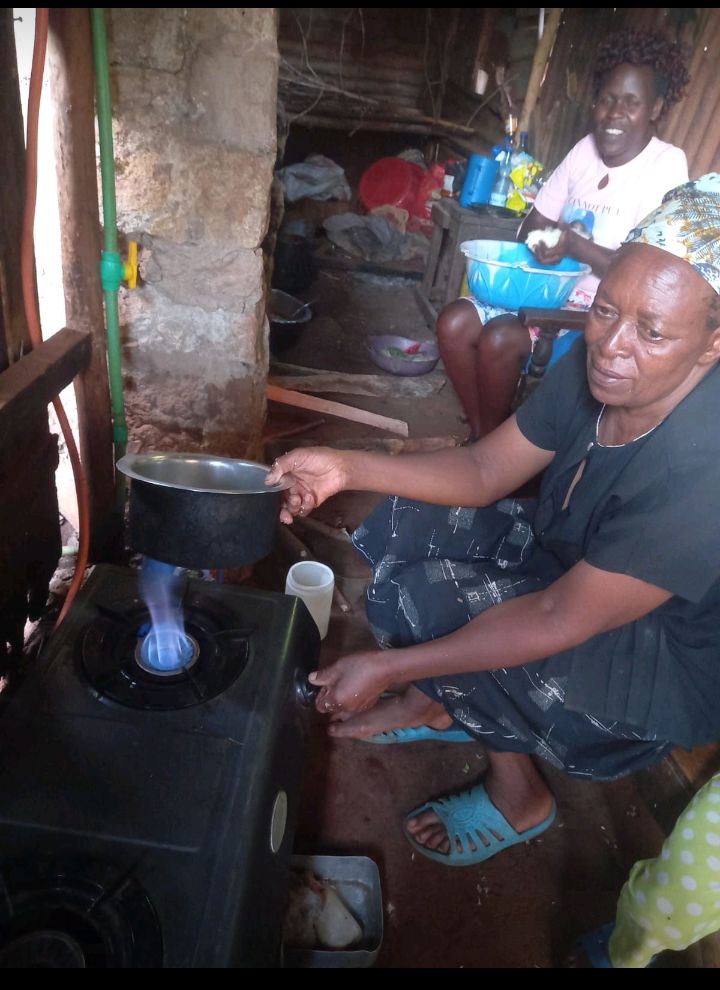We are harnessing the economic value and potential of invasive species, for example, the water hyacinth, for transformation into valuable products such as animal feeds, organic fertilizers for farming, and a renewable energy source for cooking. This initiative offers income diversification, improved agricultural productivity, and access to clean energy, all while restoring the delicate ecological balance of Lake Victoria and mitigating the environmental impacts that hyacinths present.
Turning Invasive Weeds into Green Solutions

Kampala, Uganda
Riparian communities including fishermen and women
The water hyacinth is a floating weed that forms a dense mat on water surfaces producing a distinct beautiful purple flower at its reproductive stage. It's existence can be traced from as far back as 1988, first sighted on the shores of Lake Victoria only to infest 80% of the shoreline eight years later. It is important to note that 18% of Uganda's land surface is covered by water bodies with the water hyacinth firmly established on its major water bodies Lake Kyoga, Albert, Lake Victoria and along River Nile. Thirty five years later after its first resurgence, it has given the government and fishing communities a run for their money leaving along its path a litany of attempts and strategies to combat its resurgence due to the ecological and economic challenges it presents This mostly attributed to the high reproductive nature of the water hyacinth, its ability to double its biomass in a few days as well as ability of its seed to remain dormant up to 15 years awaiting the right environmental conditions.
The dense mat of water hyacinth not only hinders navigation across the water affecting fishing activities but also lowers transfer of oxygen from the air to the water surface. Its dense mat cover is a breeding place for mosquitoes attributing to high incidences of malaria in riparian communities. Furthermore, it affects water levels through siltation which fouls the breeding, nesting and nursery grounds of inshore fishes. Reports reveal that it has consequently reduced fish stocks on Lake Victoria by up to 46%. Further still, as the weeds die, organic debris accumulates at the bottom of the water body creating shallow water environments less suitable for fish growth. Its ability to lower oxygen dissolution into the water lowers available dissolved oxygen in the water affecting marine life. The underlying water column often contains little or no oxygen resulting in high methane production rates and high methane emission intensities. Studies have revealed higher green house gas - methane emissions of up to 20-220% in water zones invaded by the hyacinth than those in hyacinth free areas.
Fishermen harvest the weed for us to transform it into valuable products. Our target market includes households, riparian communities, as well as animal and crop farmers. We operate on both B2B (business-to-business) and B2C (business-to-consumer) models. Our primary competitors are LPG companies. However, our energy is cheaper because, unlike our competitors, we don't need to buy gas for packaging; our gas is readily obtained from our hyacinth feedstock.
We have been able to reach close to 70 people with our products fertilizer and feeds that have been invaluable in providing feedback on our products. Mr. Kimbuugwe Hassan one of our beneficiaries, a resident of Bwaise an area also highly infested with water haycinth, we were able to pipe gas directly to his household. Mr. Hassan has a family of 8 people. From our plant, we were able to pipe gas directly to his kitchen and he is now able to cook up to 8hours per day.
We have a 12m3 biogas plant already established, capable of generating sufficient gas to cook for up to 8 hours per day. Our solution offers cheap and affordable fertilizers and feeds, along with low-cost gas for cooking.
Scaling deep involves fostering communities of practice through trainings, mentorships, and networks. These initiatives support the growth and sustainability of local efforts by building knowledge, skills, and collaborative networks within communities.
Scaling up requires policy frameworks, planning initiatives, and legislation that recognize and prioritize sustainable solutions.
Scaling out involves replicating in diverse contexts, facilitating access to necessary infrastructure, resources, and expertise.
We are able to collaborate with apartment owners, households to supply them gas. We are also able to collaborat with water cleaning companies to acquire feedstock.

